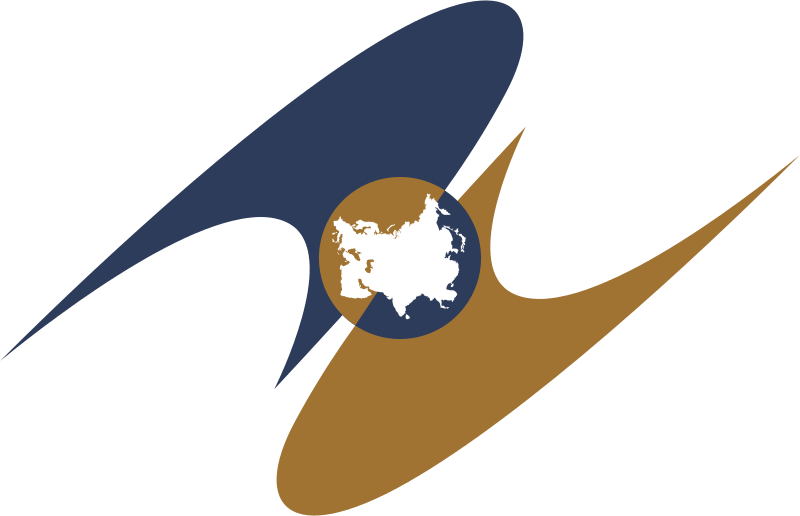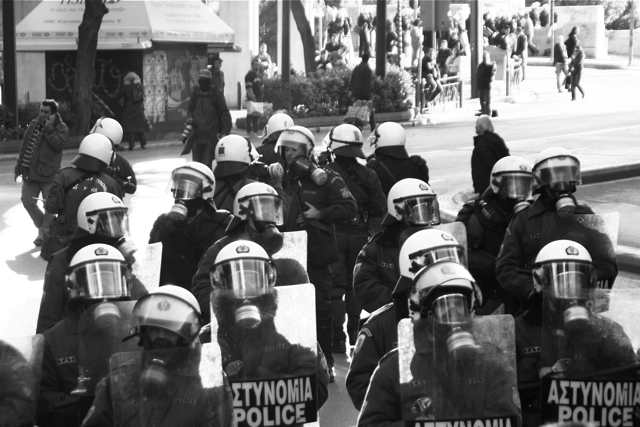
For all the excitement about Euromaidan and the Ukraine crisis over the last 18 months, it seems that many have forgotten why Vladimir Putin so desperately wanted to keep Kyiv in Russia’s orbit in the first place. Starting as early as November 2013, Putin gambled his government’s international credibility to coerce Ukraine into joining his new Eurasian Union (EAU) and rejecting the European Union and the West. He has failed, for now, but the Eurasian Union is moving ahead anyway. Russia, Kazakhstan and Belarus signed an association treaty in 2014, and Armenia and Kyrgyzstan have since joined them. While the Kremlin portrays the EAU (also called the Eurasian Economic Union/Eurasian Customs Union) as a purely economic entity, it is structured to guarantee Russian dominance and lays the groundwork for political integration. Incidentally, all current EAU member states are also members of the Collective Security Treaty Organization (CSTO), a mutual defense alliance and the spiritual successor to the Warsaw Pact. Stopping short of recreating the Soviet Union, Russia will use the EAU to control its smaller neighbors and consolidate its sphere of influence.
Here are three pressing reasons why the Eurasian Union, even without Ukraine, is still going to be a big deal for the transatlantic community:
- A Frozen Conflict Warming in the Caucasus
Armenia and Azerbaijan’s century-long struggle over the Nagorno-Karabakh region is one of the world’s thorniest ethnic conflicts. The Soviet Union originally placed this majority ethnic Armenian territory within Azerbaijan’s national borders, and when the USSR dissolved in 1991, Nagorno-Karabakh tried to break away from Azerbaijan and unify with Armenia. The secession ignited a war between Azerbaijan and Armenia, killing at least 20,000 people and turning more than a million into refugees. The conflict officially ended with a shaky ceasefire in 1994, but frequent border skirmishes since then have killed dozens. In the past, Azerbaijan’s larger military and bigger GDP was perceived as being balanced by Armenia’s better-trained, Russian-backed forces, creating a strategic deterrent for either side to break the pair’s delicate truce. However, Azerbaijan’s growing energy revenues have allowed it to invest heavily in its military capacity in recent years, spending more on defense than the entire Armenian national budget. Within a few years, Azerbaijan will have good reason to believe it can win a war against Armenia.
Yerevan is fully aware of this threat, and in the absence of other viable options is turning to its CSTO ally, Russia, for further security guarantees. Since acceding to the EAU in December 2014, Armenia has essentially placed its economic and political destiny in Russian hands. Doing so might deter an Azerbaijani attack, but it could also give Russia an excuse to intervene in Nagorno-Karabakh and Azerbaijan itself, much like it has in Crimea and eastern Ukraine, not to mention Georgia in 2008. This scenario would ensure Russian hegemony of Europe’s energy gateway in the Caucasus and continued European Union dependence on Russian gas.
- Water Wars in Central Asia
Kyrgyzstan and Tajikistan control most of Central Asia’s freshwater through massive glaciers in the Tian Shan Mountains. Both states also generate the vast majority of their domestically-consumed electricity using hydroelectric dams. The “downstream” states of Kazakhstan, Uzbekistan and Turkmenistan compensate their water-rich neighbors with natural gas and other fuels in exchange for Kyrgyzstan and Tajikistan’s promise to refrain from further hydropower use and development, which would decrease downstream water availability. Recently, both upstream states have begun planning more extensive hydro projects, which could devastate the agricultural production and exports of Uzbekistan, Turkmenistan and Kazakhstan.
Russia can utilize the Eurasian Union to apply selective pressure on Turkmenistan and Uzbekistan, potential EU gas suppliers that have begun to politically distance themselves from the Kremlin. When Kyrgyzstan and Tajikistan both join the EAU (Kyrgyzstan acceded on August 11, 2015), neither will have an incentive to continue trading water for Uzbek and Turkmen energy when the alternative is cheap Russian and Kazakh gas and hydropower investments. Moscow may choose to sell energy to Kyrgyzstan and Tajikistan at bargain prices and provide generous loans for hydroelectricity projects in order to starve Uzbekistan and Turkmenistan of upstream water. This leverage could be used in a variety of ways, the most obvious and pragmatic being to coerce the two water-poor states into EAU accession and lock down Central Asian energy for good.
- Eurasian Energy Flows East
Surprisingly, some observers have dismissed Russia’s new gas deal with China, claiming that the much lower prices demanded by the Chinese will guarantee Russia and Europe’s continued energy co-dependence. The same skeptics may have doubted that the Soviet Union would become Europe’s main energy supplier before the discovery of the Medvezhe and Urengoy gas fields. Although China has been able to haggle for rock-bottom gas prices in the short term, it is actually desperate to secure new, cleaner energy sources to meet its burgeoning demand without increasing pollution in its major cities. China may have the upper hand in this deal now, but Russia stands to benefit immensely from it in the years to come. It is entirely possible that China will supplant Europe as Russia’s main gas market in the near future. Incidentally, this could also mean the evisceration of lucrative US coal exports to China.
Consider the implications if Russia does expand the EAU to include all of Central Asia, or at least all CSTO states (Armenia, Belarus, Kazakhstan, Kyrgyzstan, Russia and Tajikistan): while impeding Caspian and Caucasus energy development for European markets in the west, Russia can direct most or all Central Asian gas to the east under EAU terms. China isn’t the only Asian country that wants Eurasian gas; Japan and the Koreas are keen to cheapen and diversify their supply. In the last year, BRICS partner India has made serious overtures about a Russian-Indian gas and oil pipeline as well. The truth is that within a decade, Russia may not need European energy revenues nearly as much as the EU will need Russian energy.
Policy Solutions
It’s been generally accepted in American foreign policy circles, especially after Ambassador McFaul’s damning analysis of US-Russian cooperation, that what is good for Putin is probably not good for the United States and the West. To prevent the EAU from becoming a real threat for the transatlantic community, the US ultimately needs to find a way to efficiently export liquefied natural gas to the EU. In a more immediate sense, the White House must work with its EU partners to court and cooperate with Russia’s neighbors. In the Caucasus, speeding up Georgian accession to NATO would send a strong signal to Russia that the West is prepared to resist Ukraine-style soft invasions in the future. While energy-rich Azerbaijan is still too autocratic and unpredictable to become a full partner for the West, Baku may be willing to trade democratic reforms in exchange for NATO and EU membership within the next decade. Armenia’s fate should also be considered. The ruling Republican Party, which oversaw Armenia’s EAU accession in 2014, was only supported by a 44% plurality of Armenian voters in the last election.
In Central Asia, the US and EU should consider targeted development assistance for Turkmenistan and Uzbekistan’s water infrastructure. Both countries suffer from hopelessly inefficient water transportation and storage systems, and improving these would strengthen regional water security and Caspian ties to the West. Incidentally, this new efficiency could also help reverse the ecological devastation caused by heavy Aral Sea water withdrawals. Perhaps most importantly, the US should cultivate bilateral ties with Kazakhstan. This is a country with immense economic potential and a healthy dose of skepticism about Russian patronage. Although the elderly President Nazarbayev is one of the world’s longest-serving autocrats, his government contains several young, Western-educated officials with relatively progressive worldviews. Kazakhstan sees itself as a balance between Russia and China, and could prove a valuable partner for the US in the years to come.
The views expressed by the author do not necessarily reflect those of the Glimpse from the Globe staff, editors, or governors.
AUTHOR BIO: Jaim Coddington studied international relations and Russian language at American University in Washington, DC. He is a former Symington and Critical Language Scholar, and he is currently an Officer Candidate with the United States Marine Corps Reserve.






